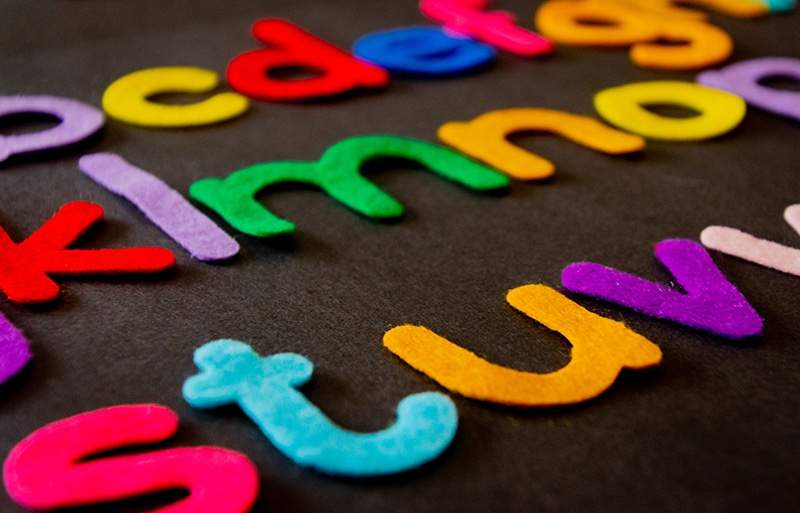Occupational therapists love using learning activities and products that effectively engage bodies and brains through multiple sensory systems. Multisensory brain-based learning enhances brain functioning and keeps children more actively involved in learning. The more childrens’ senses are stimulated during learning, the better they typically will be able to retain new information.
Here are 25 favorite activities and learning tools pediatric OTs and teachers use to help children practice and master those important pre-writing shapes and patterns, alphabet letters, and numbers. Please feel free to reach out to us if you ever have questions, need individualized suggestions, or would like to brainstorm ways to adapt activities for your child.
*Adult supervision is needed with these activities (as some are not appropriate for young children under age 3 or for kiddos who mouth things). Be sure to consider your child’s development age when following the manufacturer’s age recommendations.
*Updated July 2025
1). Shaving Cream or Crazy Foam – Both are great for bathtime learning fun. Or fill the bottom of a cake pan or cookie sheet with one of these fluffy favorites and draw away! Rinse with water and wash ’em down the drain when the kids are done playing.
2). Wikki Stixx – Wikkis are a long-time favorite manipulative for twistable, playable, creative multisensory fun! These colorful wax sticks are terrific for making geometric shapes, letters, numbers, and creating 3D works of art. They stick to each other with a touch of a fingertip; stick them down, pull them up, and take them apart again and again. A mistake-proof manipulative that is endlessly reusable.

3). Rice Drawing Trays – Put brightly colored construction paper or contact paper on bottom of a cake pan or cookie sheet and “trace” letters with your fingers; the color at the bottom of the pan shows up as you draw!
4). Send kids on a hunt around the house or classroom to find everyday objects shaped like circles, squares, triangles, and rectangles. It’s an exciting way to reinforce shape recognition through real-world connections.
5). Wooden Tracing Board – This double-sided solid maple tracing board features 4 rows of pre-writing skill patterns on one side and 8 geometric shapes on the other. They come with a set of multiple-sized wooden balls and a wooden tracing stylus. Kids can trace the patterns with their fingers, the included stylus, or they can use the writing tool-like stylus to “push” the wooden balls thru the different patterns. Besides providing an engaging way to practice pre-writing strokes, this neat set also helps build functional finger grasps, eye-hand coordination, and important left-to-right eye tracking movements that are needed for reading and writing.

6). Jumbo Masking Tape Letters and Numbers – Start out by making jumbo-sized letters or numbers out of masking or blue painters tape. Then “trace” over them using hotwheel cars, line coins / magnetic chips / stickers on them, or just have fun tracing over them using your pointer finger (be sure to switch and try it with your non-dominant hand, too). Mount the tape letters on a vertical surface to increase the therapeutic benefits.
7). Squiggle Wiggle Writer is a vibrating pen with 5 different color tips that provide a nice dose of vibrating sensory input as kids write or draw. They require 1 “AA” battery which is not included.
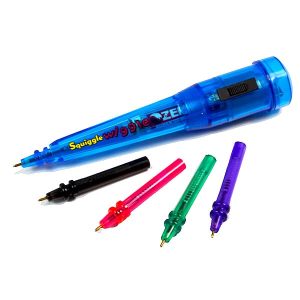
8). Air Writing – Have children use their whole arm/hand/pointer finger or even one leg to “trace” letters in the air. Draw letters or shapes with chalk on the sidewalk/chalkboard and/or use a wipe clean marker on a whiteboard in advance if your child needs a visual pattern to “air trace.”
9). Flashlight Tracing – Use the same advance prep as #8 above, and this time use a flashlight to trace the letters or numbers. Wrap a piece of colored cellaphane or a lightweight scarf/piece of material over the flashlight lenses so kids can trace in color!
10). Wikki Stix Letters or Numbers – Activity Sets are specifically designed for multisensory writing practice using the included cards and colored wikki stix. Change it up by having kids put coins, removable stickers, magnetic chips, or have them use a long piece of string/yarn to “trace” over the letters/numbers.
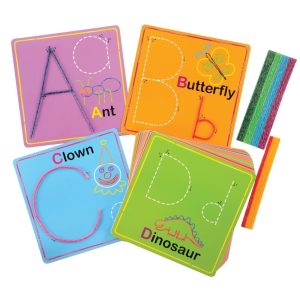
11). Play Foam – A great choice for kids who are tactile sensory seekers (as the remoldable sculptable play foam beads provide squishy, squashy, very tactile kneadable sensory input. Non-toxic play foam is gluten- and latex-free.
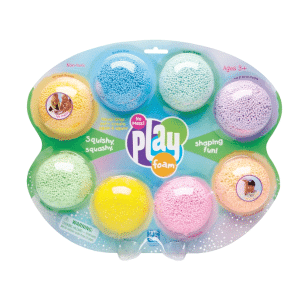
12). Play Doh Ropes – Teach kids to make long “snake ropes” by rolling play doh, then use the “ropes” to make alphabet letters. Play doh or clay can also be fun to use with the letter/number cards in our Wikki Stix Activity Sets. (#10). Up the challenge by using different grades of therapy putty (instead of play doh) to make the “ropes” so kids build their finger strength as they play.
13). Create a hopscotch grid with chalk or tape and number each square. As kids hop, they say the numbers out loud. You can even call out numbers for them to jump to for an added challenge.
14). Magnatab – This neat drawing set provides an irresistible way to teach children the correct way to form uppercase letters. The pencil-like magnetic stylus is their pencil, the bead board is the paper, and their fingertip is the eraser! Tiny metal beads “click” and pop up like magic as kids trace over the letters; tiny directionality arrows visually cue how to draw the strokes correctly. These are super cool!
15). Legos and other small brick-type building blocks can provide a fun and engaging way to practice forming letters and numbers. Have an adult or older sibling build model letters (if needed) for younger kiddos to copy.
16). Practice drawing letters, number, and geometric shapes using our wonderfully tactile, very addictive Shimmery Sequins Drawing Board
17). Give kids cards with groups of objects (e.g., 4 apples), and have them clip a clothespin on the correct number. It builds counting skills and strengthens finger muscles.
18). Do a Dot Rainbow Paint Markers – Chunky washable paint markers in bright colors. Just twist off the cap and dab away. No water, messy
brushes, or clean-up required.
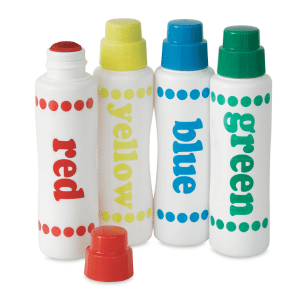
19). Body Letters – Form letters “Y.M.C.A.” style! Have your child do this activity in different developmental positions to increase the challenge and therapeutic value (standing, sitting, tall knees, kneeling, prone (lying on your stomach), supine (lying on your back), half kneeling, etc.
20). Each week, make a craft related to a letter (A for apple, B for butterfly). It connects letters to words and enhances letter-sound relationships through creativity.
21). Create a puzzle where kids match numbers with the correct number of dots or pictures. It encourages early math skills and visual discrimination.
22). Rainbow Writing – Have your chiild trace over and over letters, shapes, or numbers using a different color crayon, colored pencil, or chalk stick each time they trace. Simple and no special preparation is required.
23). Finger Painting – A great multisensory activity for drawing practice. Click on the link to see our Edible Finger Paint recipe!

24). Stick magnetic letters on a cookie sheet and call out one for your child to find and move. You can also spell simple words to encourage early reading.
25). Magnetic Chips and Wands – These inexpensive magnetic tools make fun “magic show” like manipulatives! Use the chips to “draw” pre-writing shapes, letters, and numbers – then use the wands to “magically” scoop them up. Have kiddos do this activity while riding on a scooter board, laying upside down on the couch or over a therapy ball, in different developmental positions (see #20), or while doing animal walks (to provide vestibular sensory input at the same time). These are not for young children or kiddos who mouth things.
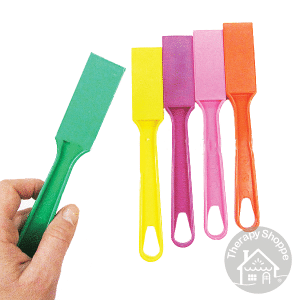
– Therapy Shoppe® OT Mom ❤️
©2020 Therapy Shoppe® Incorporated. All rights reserved.


